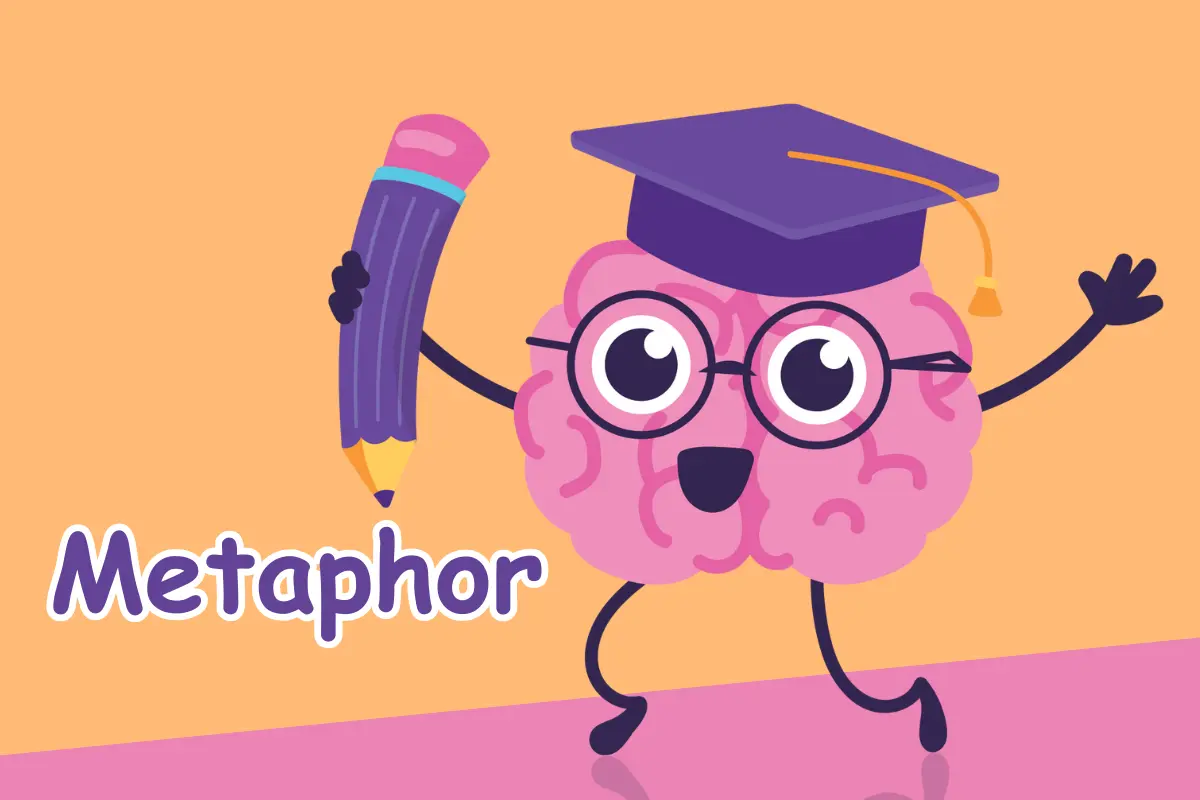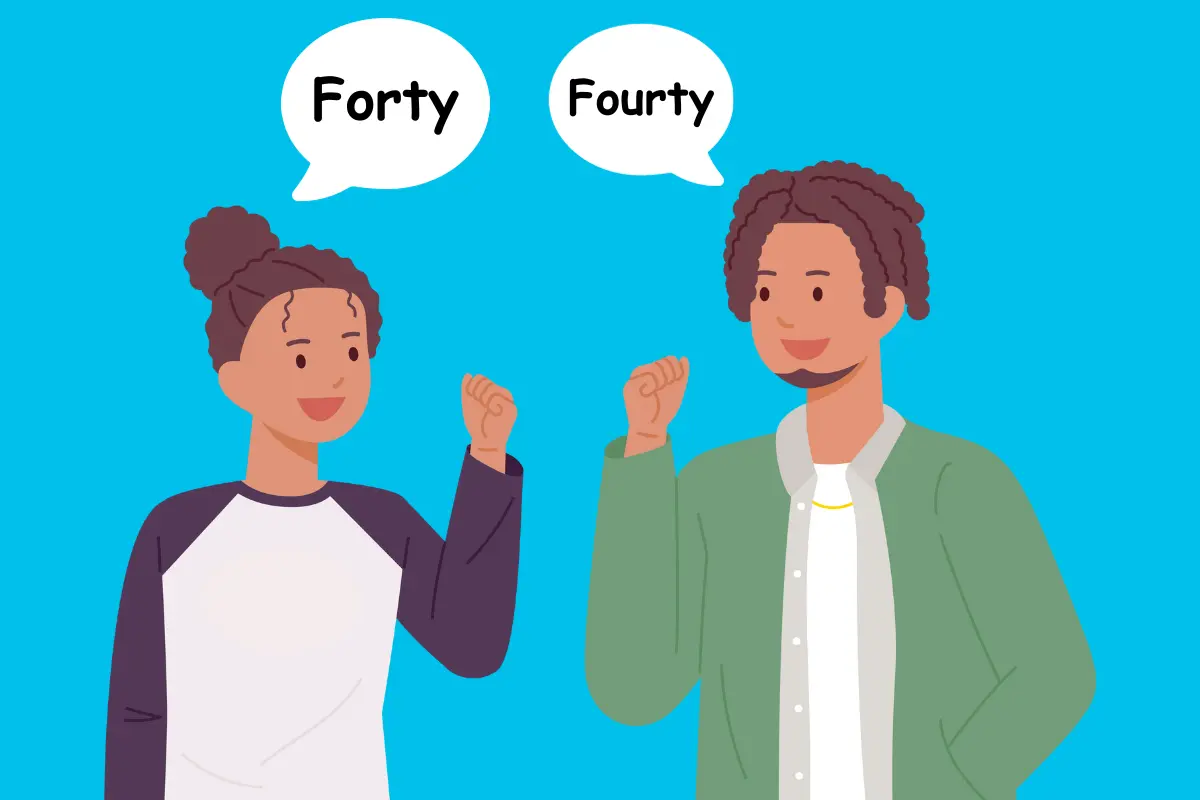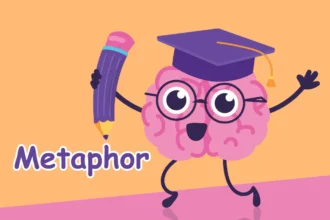What is a Metaphor? Definition, Meaning, Types, and Examples
Discover the meaning of metaphors, their types, and examples in this comprehensive guide. Enhance your understanding of this literary device and its usage in language.

Zannat Mou
Last updated on Jun 10th, 2024

When you click on affiliate links on QuillMuse.com and make a purchase, you won’t pay a penny more, but we’ll get a small commission—this helps us keep up with publishing valuable content on QuillMuse. Read More.
Table of Contents
Metaphors as a linguistic tool are potent because they go beyond the explicit meaning to express higher ideas and create vivid images. Metaphors help make sense of complicated ideas and feelings by showing relationships between two things and, thus, helping people see a new perspective.
In literature, everyday conversation, or even in our thinking, metaphors determine the way we make sense of and explain the surrounding world. The former discusses the core of metaphor by looking at its definition, types, and different examples, as well as how it is used in language and communication.
What is a metaphor?
A metaphor is a figure of speech through which two or more different things are compared to show a common quality they have by stating that one thing is the other. Contrary to similes, which use ‘like’ and ‘as’ metaphors, this one uses these laterals to draw a comparison.
The purpose of its similarity is to create clear pictures and help express meanings more effectively and interestingly. For example, when it is said, “Time is a thief,” it gives us the idea that time robs us of our days, stressing that it’s fast and hard to grasp without actually saying it. It can be found in literature, daily language, and various types of communicative discourse, thus making our ways of expressing and explaining abstract ideas more colorful.
Metaphor Meaning (Video)
Types of Metaphors
Theorists and scholars have said that there are numerous forms of metaphor. Metaphors are classified differently; they can be classified structurally by their usage and the context in which they are used. On this point, let’s discuss the different types of metaphors:
1. Standard Metaphors
Employ standard metaphors or literal metaphors to talk of a simpler comparison where two, unlike things, are compared. They directly tell you that one object is the other, thus giving you an easy way to transfer the meaning from one object to another. What they do may be quite simple, yet their impact can be quite profound, giving you an almost instantaneous understanding of the traits being compared.
2. Implied Metaphors
Implied metaphors are the kind of metaphors that do not explicitly state one of the items being compared, and hence, as a reader or listener, you will need to infer what is meant by them. They entail you deducing the meaning by yourself, which can be a more implied and subtle way of understanding things. This type of metaphor depends much on context as well as on the addressee’s imagination, who should be able to establish an implication.
3. Extended Metaphors
Extended metaphors span several sentences, paragraphs, and even texts. They elaborate on one metaphorical idea, allowing them to explain it more profoundly and create a richer story. Such metaphors could be the connecting thread that unites all parts of a piece, helping to dig deeper into the essence of the writing.
4. Dead Metaphors
These types of metaphors have been overused to the extent that they no longer express any imagery or carry any force. They are integrated into the language of every day to a degree where their metaphorical meanings are not even recognized any longer. Even though dead metaphors do not have the vividness of other metaphors, they are valuable because they are familiar and can be understood easily.
5. Mixed Metaphors
Mixed metaphors combine two or more metaphors in a way that can be incongruous or illogical. They are the product of unintentional use; generally, mixed metaphors may also be used for a purpose (for example, humorous or rhetorical). These show that something can be very complex or absurd by using different metaphorical images in one statement.
6. Conceptual Metaphors
The conceptual metaphors we are talking about here do not involve the idea of metaphor as a rhetorical figure but rather help to understand the same conceptual domain via another one. This issue is so elementary that it can be considered a key factor in the formation of our perception and thinking; it can even structure an entire mindset’. Such metaphors bind the ways we express ourselves and interpret things by connecting general ideas to more specific examples.
7. Visual Metaphors
Visual metaphors are used to visually express a deeper meaning with the pictures, as is done in advertising and media language. Unlike allegories that employ many symbolic elements to illustrate one abstract notion, a metaphor employs just a few elements, or even only one element, to make a parallel between the picture and some real-life moments or things. In this way, messages could be better communicated via visual representation, and consequently, opposites’ perceptions could be created through direct mind and heart cooperation.
8. Root Metaphors
Root metaphors are the basic metaphors that give form to the overall understanding of a culture or an individual. They affect what we see and how we act in the world at a profound level, often below consciousness. The structure of language is such that it suggests some things and discourages others. Root metaphors are those ideas on which other, more general patterns of thinking and doing are based.
9. Similes
In contrast to metaphors, which are not strictly different, similes are closely linked and often mentioned in the same breath as metaphors. Similes make comparisons using “like” or “as,” giving clarity and directness. They serve the purpose of making it vivid and explicit by pointing out similarities between different things.
10. Pataphors
Their creation goes beyond the creation of metaphor, and they also go past an extended metaphor. They do not depict a different understanding from that of the original metaphor but create an entirely new fictional reality. Metaphors require the same type of imaginative leap that is intrinsic to metaphors, but their usage is pushed to an extreme, which may give rise to surreal or absurd images. These are ways in which they break language and thought barriers, which can be a source of artistic as well as just playful search for ideas.
Different types of metaphors serve different purposes and give language various layers of meaning and nuance, thus making metaphors an all-round and potent instrument in communication whereby language is enriched by its implicit imagery and becomes a dynamic tool for interaction.
Metaphor Examples

Metaphors are figures of speech that describe objects or actions by making implicit, rather than explicit, comparisons with another object or action that is different (as the case may be) yet has one thing in common. Here are some examples of metaphors used in everyday language, arranged according to their themes:
1. Broken Heart
“He left her with a broken heart.”
This metaphor gives us a vivid picture of how much emotional pain comes after a breakup.
2. Bottling Up Emotions
“She bottled up her feelings until she couldn’t anymore.”
This implies suppressing things inside oneself until a point when they come out.
3. Roller Coaster of Emotions
“The news sent him on a roller coaster of emotions.”
This conveys that there were quick and intense emotional changes.
4. Spreading Ideas
“All at once, her innovative ideas caught fire.”
This description compares the propagation of ideas to the sudden flare-up of a flame.
5. Words are weapons
“His words cut deeper than a knife.”
This metaphor points out how powerful words can be in causing emotional pain.
6. A Flood of Information
“We are drowning in a flood of information.”
This lets us know that there is an exorbitant amount of information, likened to a natural flood system.
Common Metaphors in Everyday Language
Metaphors from the mainstream of linguistic image patterns give descriptive and oftentimes figurative tools for expressing complicated ideas, feelings, or states. Dancing is structured and patterned behavior of movements; by connecting one thing to another, flowers are bright circuitries that make your mind more vivid and can clarify and beautify emotional relations. Below are common metaphors that reflect different areas of our everyday language:
1. Time is Money
The metaphor of time being money gives us a clear message that we should not waste time and instead use it efficiently because all opportunities are gone if we lose time. It expresses “spending time,” “wasting time,” or “saving time.” stem from this metaphor. 2. Time Flies: Among the common interpretations is for it to pass very quickly, especially when one is involved or having fun. One way or another, it expresses the idea that time has wings.
3. Time is a Thief
This metaphor is used to show that time takes away the moments and experiences one has, thus pointing out the fact that life is short.
4. Life as a Journey
The metaphoric meaning tells us that we can see a path in front of us that is composed of different phases and experiences, so it raises progress and development. Expressions such as “on the road of life,” “at a crossroads,” or “navigating through life” bear reference to this metaphor.
5. Life is a Roller Coaster
It shows the ups and downs of one’s life and somehow expresses turbulent and interesting parts of the human experience.
6. The Seeds of Change
Here, change is portrayed as a developmental process; by sowing seeds, you are sure that one day they will sprout and grow into something different.
7. Climbing the ladder
This comes up often in career discussions; this metaphor makes the progression of a professional on a structured path equate to his ascending upward, and it gives you the idea that there is a clear direction to success.
8. Hitting a Wall
This term explains what happens when you face an obstacle or reach a limit, equating the feeling with getting nowhere fast.
9. Sailing Through
This gives an idea of ease and steady development; sometimes it is used to express how one can deal with a task or challenge with no difficulty.
The Role of Metaphors in Communication and Thought
Metaphors are very important in communication and thought, as they are the ones that help in understanding abstract concepts by giving them a more concrete interpretation. Metaphors are not just decorative but integral, which is evident, among other things, when it comes to how we understand and explain things.
The cognitive role played by metaphors
Metaphors play a major role at the cognitive level. According to cognitive linguists such as George Lakoff and Mark Johnson, in “Metaphors We Live By,” metaphors are the ones who give structure to our understanding of the world.
They propose that our system of concepts is mainly metaphorical. For example, one frequently talks about time in terms of money (e.g., “spending time,” “saving time,” “wasting time”). These metaphors, in particular, influence how we see things and deal with their abstractions by superimposing them on more familiar experiences.
Metaphors in literature and art
Metaphors play a critical role in enriching literature and art by conferring depth as well as multiple layers of meaning. They provide the writer or artist with the opportunity to express deep feelings and themes in a subtle yet forceful manner. A metaphor may embody an entire idea or perception in a single image or phrase, providing depth and texture to the work. For instance, the diverging roads in Robert Frost’s poem “The Road Not Taken” symbolize life choices and their outcomes, thus making the theme more heartfelt and general. Metaphors also express the deep meaning of the poem.
Metaphors are the seeds of new ideas and solutions.
The use of metaphors helps to generate new and creative approaches
Using metaphors in thinking, people can get off their regular ways of reasoning and start to see questions, problems, and solutions in a completely different light. This creative type of thinking is very important in such fields as science, engineering, entrepreneurship, and others where novelty is a key idea or approach. For example, using the concept of the “web” that was in the World Wide Web, which was a metaphor, helped conceptualize the interrelatedness of internet resources. Even if you think about writing a book somewhere, you have to use metaphor in the context.
Educational Value
As far as education is concerned, metaphors are the best instruments for teaching and learning. They make it easier for learners to get a grip on new and complex concepts by connecting them to ideas they already understand. For example, clarifying the structure of an atom by likening it to a solar system catalyzes students’ ability to visualize and comprehend atomic models henceforth. Therefore, metaphors do this job of transiting from what is unfamiliar in the academic content to what is known in the learners’ mindstreams. Some scholars have found that there is a connection between metaphors and adjectives. Because metaphors and adjectives have a great influence on language development.
Conclusion
In conclusion, metaphors are linguistic tools unlike any other that express complex ideas and deep emotions by comparing two unrelated objects. They enrich language by creating a deeper meaning as well as a more vivid picture in the minds of the listeners. There are different types of metaphors, such as standard metaphors, implied metaphors, and extended metaphors, which each provide distinctive approaches to promoting better understanding among people. From literature to conversations, metaphors are critical in influencing how we see things and express what we feel. Knowledge of metaphors will significantly improve both written and oral communication if one can use them effectively since this makes them more interesting and effective.
FAQs
What are the common types of metaphors?
Standard Metaphors: Metaphors that manifest themselves directly (e.g., “Time is a thief”).
Extended Metaphors: A metaphor that takes an elongated form over multiple sentences or paragraphs.
Implied Metaphors: give the audience a hint for a possible comparison instead of directly mentioning it (e.g., “He barked commands at his team”).
Dead Metaphors: those metaphors are overused and do not give the original meaning anymore (e.g., “Time flies”).
What is the best example of an extended metaphor?
Shakespeare’s “As You Like It” does it when comparing life to a play; there, we have an example: ‘’All the world’s a stage, and all the men and women are merely players; they have their exits and their entrances.’’
What is an implied metaphor?
An implied metaphor makes a comparison without explicitly stating both objects being compared. For example, if it is said, “He barked orders,” it could be implied that he is being compared to a dog without directly stating so.
What is the significance of metaphors in language?
Metaphors enrich language by making abstract and complex ideas easily connectable and understandable. They do this by adding a lot of creativity and vividness to communication, which helps to express emotions and insights better.
How we've reviewed this article
Our content is thoroughly researched and fact-checked using reputable sources. While we aim for precision, we encourage independent verification for complete confidence.
We keep our articles up-to-date regularly to ensure accuracy and relevance as new information becomes available.
- Current Version
- Jun 10th, 2024
- Jun 10th, 2024



